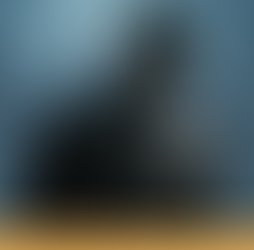


Why 'The Studio' Uses Elaborate Long Takes to Redefine TV Comedy
0
8
0

The Studio, Seth Rogen’s sharp-witted Apple TV+ comedy, has taken the television world by storm with its bold stylistic choice: every scene is crafted as an elaborate long take. This cinematic technique, often called a “oner,” involves shooting entire sequences in one continuous shot without cuts, creating a frenetic, immersive experience.
But why did Rogen and co-creator Evan Goldberg choose this ambitious approach for The Studio? In this article, we dive into the reasons behind this daring decision, exploring how it enhances the show’s storytelling, pays homage to classic cinema, and sets a new standard for TV comedies.
Why Did The Studio Embrace Long Takes as Its Signature Style?
The decision to shoot The Studio in long takes was inspired by cinematic masterpieces like Robert Altman’s The Player, which opens with an iconic eight-minute tracking shot. Rogen and Goldberg, both avid cinephiles, wanted The Studio to feel like a love letter to filmmaking.
By using long takes, they infuse the show with a “manic energy” that mirrors the chaotic life of studio executive Matt Remick (played by Rogen). As Rogen explained, the technique immerses viewers in the high-stakes world of Hollywood, where every moment feels like a race against time.
This approach wasn’t just a stylistic flex. It was baked into the writing process from the start. Scenes were crafted to unfold in real-time, ensuring the material suited the oner format. Cinematographer Adam Newport-Berra pushed the team to commit fully, using one camera and one lens to heighten the challenge and authenticity.
How Do Long Takes Amplify the Comedy in The Studio?
Comedy often relies on quick cuts and punchy edits, but The Studio flips the script. Long takes create a relentless pace that amplifies the show’s cringe humor. In episode two, aptly titled “The Oner,” the entire 25-minute episode unfolds in a single take, following a film crew’s chaotic attempt to capture a sunset shot while Matt disrupts the set.
This unbroken shot traps viewers in the escalating tension, making every awkward moment and comedic misstep hit harder.
The lack of cuts also forces the cast to stay razor-sharp. Actors like Ike Barinholtz and Kathryn Hahn deliver rapid-fire dialogue while navigating complex blocking, turning scenes into comedic high-wire acts. The result? A visceral, laugh-out-loud experience that feels like you’re on set with the characters.
What Role Does Cinematic Homage Play in The Studio’s Long Takes?
The Studio is steeped in reverence for cinema, and its long takes are a nod to legendary directors like Martin Scorsese and Orson Welles, whose films like Goodfellas and Touch of Evil used oners to stunning effect.
Rogen and Goldberg use this technique to evoke the New Hollywood era, a time when bold filmmaking thrived before the rise of corporate-driven studios. The show’s visual style, with its grainy textures and earthy tones, reinforces this nostalgic connection.
Specific episodes lean into this homage.
For example, the noir-inspired “The Missing Reel” uses a long take to mimic detective films, while “The Golden Globes” captures the chaos of an awards show with a sweeping, unbroken shot at the Beverly Hilton. These choices make The Studio feel like a cinematic playground, blending satire with genuine artistry.
How Do Long Takes Reflect the Show’s Themes?
At its core, The Studio is about the tension between art and commerce in Hollywood. Long takes embody this struggle by showcasing the painstaking effort behind filmmaking.
Each oner requires meticulous coordination between cast, crew, and camera operators, mirroring the collaborative chaos Matt navigates as he tries to make great films under corporate pressure. As Rogen noted, shooting oners felt like a “sport,” with every department working in sync to pull off a take.
This technique also underscores Matt’s fragile ego. The camera’s unrelenting gaze follows him through moments of triumph and humiliation, exposing his insecurities without the relief of a cut. It’s a fitting metaphor for a character who loves movies but fears he’s ruining them.
Why Are Long Takes Technically Impressive in The Studio?
Pulling off long takes is no small feat. The Studio’s production team faced immense challenges, from choreographing hundreds of extras in the “Golden Globes” episode to shooting during a four-day window at magic hour for “The Oner.”
On average, scenes required 16 takes to perfect, with resets often taking longer than the shots themselves. Yet, the cast and crew embraced the process, with even Martin Scorsese praising the single-camera approach during his cameo.
The technical audacity paid off. Fans and critics have lauded The Studio’s seamless oners, with some, like X user @TristanZerafa, calling episode two’s long take “impressively complex.” The show’s 96% Rotten Tomatoes score reflects its critical acclaim, proving that the gamble on long takes was worth it.
Some Closing Thoughts:
The Studio’s use of elaborate long takes isn’t just a gimmick—it’s a storytelling revolution that blends comedy, cinema, and satire into something truly unique. By immersing viewers in the chaos of Hollywood, paying tribute to filmmaking legends, and pushing technical boundaries, Rogen and Goldberg have crafted a show that feels both nostalgic and groundbreaking.
Whether you’re a cinephile or just love a good laugh, The Studio proves that sometimes, one unbroken shot is all it takes to steal the scene.
Catch it on Apple TV+ and see why this comedy is rewriting the rules.













